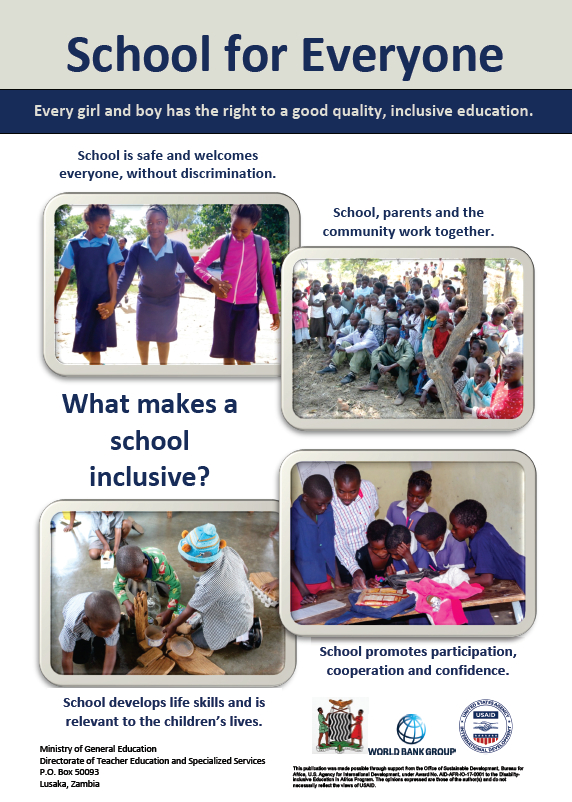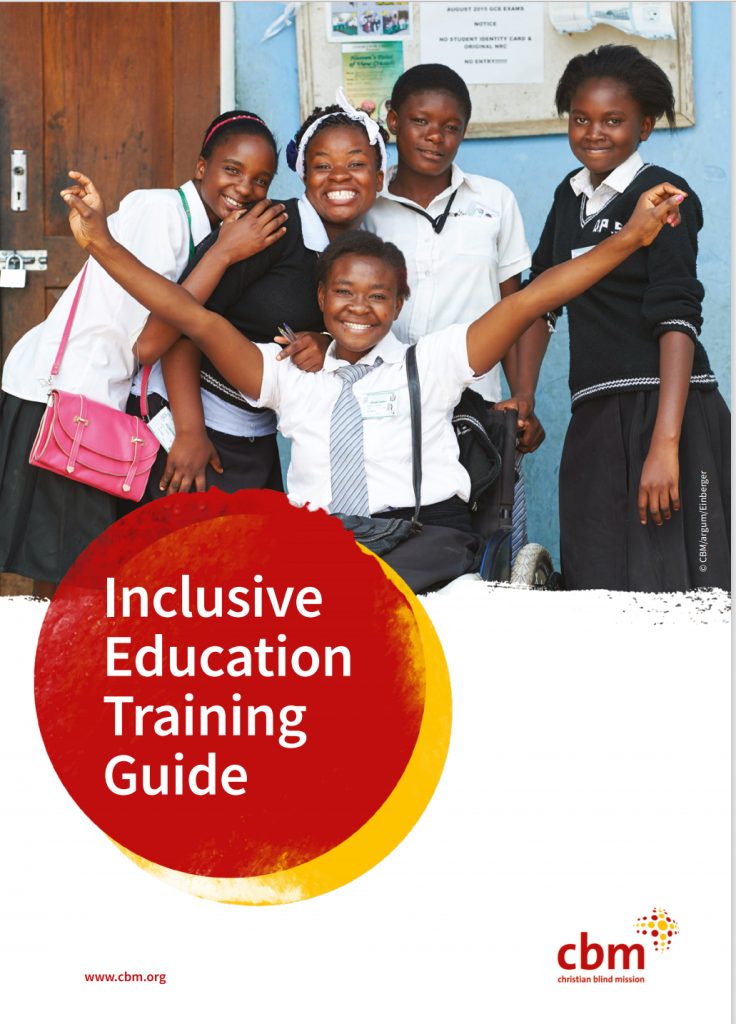STiR Education’s new paper shares experiences from its teams in India and Uganda. It describes how they have adapted their work during the Covid-19 pandemic, and used virtual approaches to support teachers.
Blog
New items in EENET’s online library #1 (2021)
In the last month we have added various new items to our online inclusive education library. These include:
An Introduction to Inclusive Education for Disabled People’s Organisations. Participants’ Handbook. PDF 2mb.
Deaf Education in the Global South (MESHGuide) HTML.
School for Everyone. Series of posters and leaflets.
Skills for Inclusive Facilitation (video).
If you have any inclusive education documents or videos that you would like us to add to the EENET online library, please contact us.
*NEW posters and leaflets * Supporting inclusive education awareness raising with community members, school leaders, and education managers and decision makers.
EENET worked with World Bank Zambia and the Zambian Ministry of Education Education (as part of a USAID-funded initiative) to develop a series of 3 posters. They contain key messages that you can use when working with stakeholders. The posters are available to download in A4 and A3 sizes from EENET’ website:
We also helped to develop a series of 3 leaflets. The leaflets are designed to be printed double-sided on A4 paper, then folded to A5.
You can download the leaflets from our website:
Leaflet for community members.
Leaflet for education managers.

INEE blog on the impact of bombing on education in Gaza
This new blog post by Ayman Qwaider highlights the situation of education following the latest bombing in Gaza. It reports on an INEE workshop with educators from Gaza. The blog also contains a hard-hitting timeline graphic showing the extent of the challenges and trauma that an average 14-year-old from Gaza has already experienced.
Announcing the UKFIET Conference Programme
Date: 13-17 September 2021.
The programme for the virtual UKFIET Conference is now available. There are six themes under the overarching theme of `Building Back Better in Education and Training: Reimagining, Reorienting and Redistributing` and there will be two themes running each day. All of the sessions will be recorded and made available to delegates for 30 days via the conference platform.
EENET will once again have a stall at this conference. This year it will be a virtual stall, of course! If you have registered for the conference, you’ll be able to see our sample materials and meet with us through the conference exhibition platform. EENET team members – Dr Su Corcoran and Helen Pinnock – will also be presenting a paper about a survey linked to our home learning project last year.
Register online for the conference by the 6th September.
UKFIET would like to thank their theme sponsors: Curriculum Foundation, ACER UK and Education Development Trust.
Keynote speakers:
- Baela Raza Jamil, CEO of Idara-e-Taleem-o-Aagahi (ITA), Centre of Education and Consciousness and Commissioner with the Education Commission.
- Dean Brooks, Director of Inter-agency Network for Education in Emergencies (INEE).
- Paul Morris, UCL Institute of Education, BAICE President, will address Covid and ‘Building Back Better’: Global Agencies, Crises, and the Future of Education.
- Alicia Herbert, Director of the Education, Gender and Equality Directorate (EdGE), at the Foreign, Commonwealth & Development Office (FCDO).
Education During COVID-19 in Bangladesh – INEE blog
Due to the COVID-19 pandemic, around 39 million learners in Bangladesh are not going to their schools, colleges, and universities since 18th March 2020. This new blog, written by Md. Ramjan Ali, covers many aspects of a range of methods to ensure that everyone can still get the education they have the right to. These methods apply to learners, teachers, parents, and care-givers.
* COMPETITION * Win an EENET ‘library in a box’

Would you like to win a free EENET ‘library in a box’ for your teacher training college, university, school, resource centre, or project office?
We’ve got 10 boxes packed with inclusive education materials to give away absolutely free! Each box contains a set of Enabling Education Review back issues, plus a selection of posters, leaflets, training manuals and guidance booklets. The materials provide huge amounts of practical advice on how to make teaching and learning more inclusive in low- and middle-income contexts.
How to enter the competition: Tell us in 100 words why your university, college, school, centre or project needs a box of inclusive education materials from EENET. The first 10 entries will receive a box, so you need to be quick!
Bonus prize: The 5 best answers will also win a free copy of the fantastic new book “Hanging On – A Special Educator’s Journey into Inclusive Education” by Kanwal Singh.
Send your competition entries to us via Facebook private message or email info@eenet.org.uk.
We will contact the winners to arrange delivery. Boxes will be delivered using a secure courier service wherever possible.
[Image shows a selection of publications and posters. Note, the contents of each ‘library in a box’ may vary slightly from that shown in the photo.]
[Webinar] Post-pandemic education for deaf learners in the Global South
Date: Thursday 2 September 2021.
Time: 11-12:30 BST.
Deaf Child Worldwide is hosting a webinar to share information on what education will now look like for deaf children because of the COVID-19 pandemic. During this Zoom event, evidence from a research project and experiences from deaf secondary school students will be shared. A Q&A panel discussion with two deaf professionals that study the education system will also be available for anyone to access, and there is the opportunity to meet fellow practitioners from around the world in the breakout sessions.
The webinar will be in English, with live subtitles in English and International Sign throughout the whole event.
New brief: Child marriage and girls’ education
`Girls Not Brides: The Global Partnership to End Child Marriage` has released a new brief that shares the key facts of child marriage and girls’ education, common drivers and impacts, and offers solutions to this issue. The brief includes examples of work by Girls Not Brides member organisations and recommendations for governments, among a wide range of other things.
This brief is available in English, French, and Spanish.
* NEW * Inclusive Education Training Guide from CBM
EENET has helped CBM to develop an inclusive education training guide – for CBM staff, partners and other NGOs – that is based around a set of frequently asked questions. Facilitators can use these questions to help them select topics and activities to suit their trainees’ needs and interests. The activities can be used to create anything from a one-hour discussion at a staff meeting to a one-week workshop.
The guide consists of 5 booklets:
Introduction
A: Inclusive education and CBM
B: Inclusive education and the community
C: Participation and achievement for all learners
D: Education system change.
Each booklet contains background information on each question, activities, handouts, and case studies.
Download the training guide as an accessible PDF.

